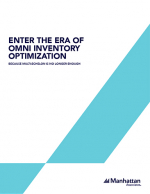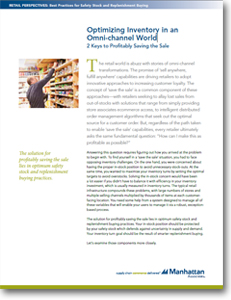Optimizing Inventory in an Omni-Channel World: 2 Keys to Profitably Saving the Sale
The solution for profitably saving the sale lies in optimum safety stock and replenishment buying practices.
The retail world is abuzz with stories of omni-channel transformations. The promise of ‘sell anywhere, fulfill anywhere’ capabilities are driving retailers to adopt innovative approaches to increasing customer loyalty.
The concept of ‘save the sale’ is a common component of these approaches—with retailers seeking to allay lost sales from out-of-stocks with solutions that range from simply providing store associates ecommerce access, to intelligent distributed order management algorithms that seek out the optimal source for a customer order. But, regardless of the path taken to enable ‘save the sale’ capabilities, every retailer ultimately asks the same fundamental question: “How can I make this as profitable as possible?”
Answering this question requires figuring out how you arrived at the problem to begin with. To find yourself in a ‘save the sale’ situation, you had to face opposing inventory challenges. On the one hand, you were concerned about having the proper in-stock position to avoid unnecessary stock-outs. At the same time, you wanted to maximize your inventory turns by setting the optimal targets to avoid overstocks. Solving the in-stock concern would have been a lot easier if you didn’t have to balance it with efficiency in your inventory investment, which is usually measured in inventory turns.
The typical retail infrastructure compounds these problems, with large numbers of stores and multiple selling channels multiplied by thousands of items at each customer facing location. You need some help from a system designed to manage all of these variables that will enable your users to manage it via a robust, exception based process.
The solution for profitably saving the sale lies in optimum safety stock and replenishment buying practices. Your in-stock position should be protected by your safety stock which defends against uncertainty in supply and demand. Your inventory turn goal should be the result of smarter replenishment buying.
Let’s examine those components more closely.
What’s Related




Favorites





